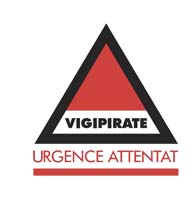Theatrical confinement
In the theatre, the use of an in camera spatial device confines characters together in a single setting from which they cannot leave. Strictly speaking, there are few such spaces in the theatrical repertoire. Classical tragedy, constrained by the rule of unity of place, most often situates its action in a palace chamber or antechamber where the characters pass and circulate, but where they also report the external events that advance the plot and, sometimes, cause it to change course. The in camera condition is therefore only relative. Some plays, however, harness the psychological dimension of the motif. Lluïsa Cunillé’s Massacre exploits both dimensions. First, by depicting a single location (a hotel lounge), which three characters enter and exit, returning irremediably. The relationship that develops between the two women gradually makes this setting indispensable as a confrontational mental space: one is unsuccessfully trying to leave, the other wants to move in permanently. The lounge where they experience their relative isolation is also the metaphor for an entire region subject to the vagaries of tourism, a region mysteriously deserted by its inhabitants, attracting and repelling at the same time. As in most dramas of confinement, balances that were painstaking to establish are upset by the arrival of a third party, a symbol of an elsewhere that makes the constrained situation unbearable.
Confined spaces are a choice terrain for playwrights who wish to observe human relationships and behaviour, which express themselves more truthfully in a closed environment. For example, through master/slave or male/female dynamics and relations of domination, Marivaux explores these spaces of confinement as places where hierarchies can finally be overcome.
Some settings and societies are particularly conducive to this approach: islands, but also prisons, or religious communities. The pressure that confinement exerts on the individual is as much a result of the enclosed setting as it is of the psychological burden it creates, while the inaccessible exterior generates anxiety and desire. In Federico García Lorca’s The House of Bernarda Alba, the matriarch locks up her daughters for an eight-year mourning period, driving them to brave all taboos, which ultimately leads to the suicide of the youngest woman, who succumbs to the temptation coming from the outside to seduce a man. Confinement, incarceration and fluctuating power relations are among Jean Genet’s favourite themes, namely in Haute surveillance or Les Bonnes. Reclusion, dependence, domination and servitude are at the heart of modern uses of this device, for which Sartre’s play, Huis clos, is the model.
“Exiting” from the confined space is a moment of great tension in contemporary theatre: Dea Loher’s Innocence, Lars Norén’s Poussière, Les Damnés after Visconti directed by Ivo van Hove, all plays that have recently been added to the Comédie-Française repertoire, are ensemble pieces that exclude “temporary exits”. All the characters are present on stage from the beginning of the play, and only leave it to die.
In Massacre, on the contrary, the final “accident” enables the characters to leave the hotel and imagine another future. In this respect, Lluïsa Cunillé’s play offers a fresh perspective on this recurring theme in the dramatic repertoire.
En raison des mesures de sécurité renforcées dans le cadre du plan Vigipirate « Urgence attentat », nous vous demandons de vous présenter 30 minutes avant le début de la représentation afin de faciliter le contrôle.
Nous vous rappelons également qu’un seul sac (de type sac à main, petit sac à dos) par personne est admis dans l’enceinte des trois théâtres de la Comédie-Française. Tout spectateur ou spectatrice se présentant muni d’autres sacs (sac de courses, bagage) ou objets encombrants, se verra interdire l’entrée des bâtiments.
